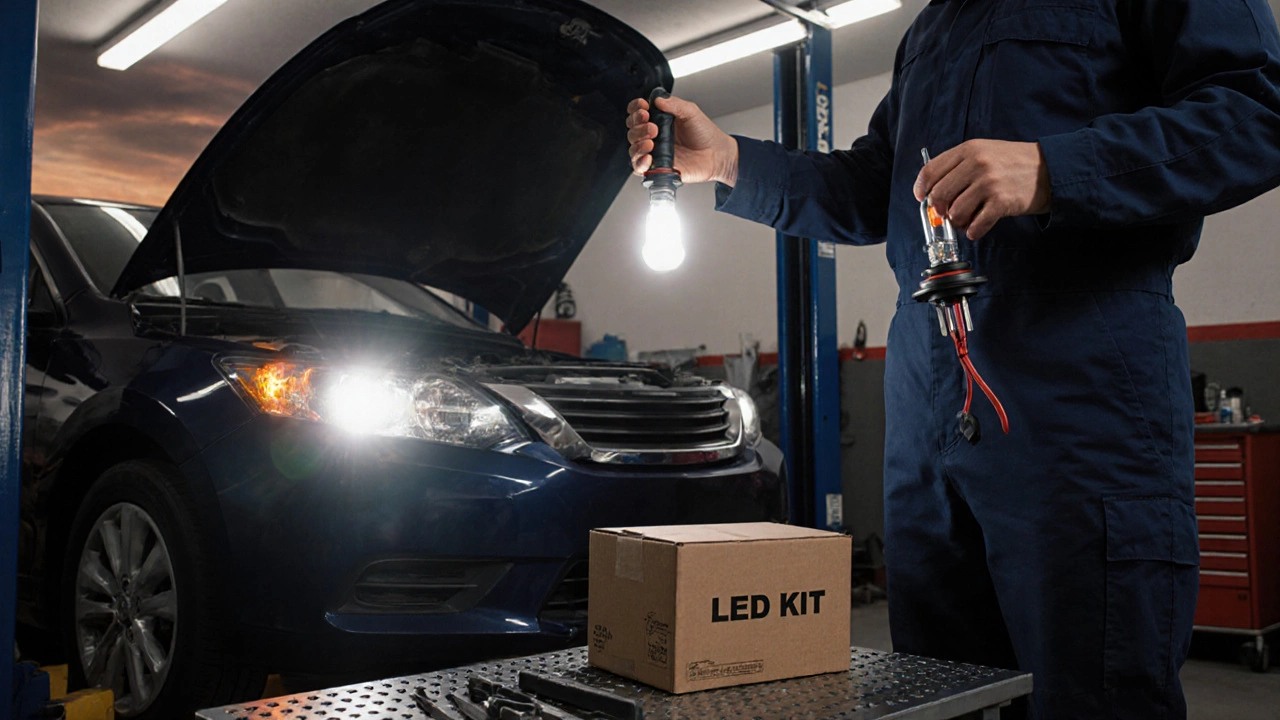Can You Directly Replace Halogen Headlights with LED Bulbs?
- Gareth Westbrook
- 19 10 2025 Lighting
Learn if you can directly replace halogen bulbs with LED headlights, covering fit, wiring, CANbus, legal rules, and step‑by‑step installation tips.
When dealing with bulb compatibility, the ability of a light source to fit, work safely, and meet legal standards for a specific vehicle. Also known as lamp compatibility, it affects everything from night visibility to warranty compliance.
One key player in this mix is LED headlights, modern light modules that use light‑emitting diodes to produce brighter, more efficient illumination. LED units come in several color temperatures, usually 6000K to 8000K, and they draw less power than traditional bulbs. Because they are smaller and run cooler, you often need a specific housing or a heat‑sink adapter. Checking the fit‑ment chart before you buy prevents the classic “won’t fit” frustration.
Older cars still rely on halogen bulbs, glass‑enveloped lamps that generate light by heating a filament. The most common sizes are H1, H4, H7 and 9005, each with a defined wattage range. Halogens are cheap and easy to replace, but they produce a lot of heat, so the headlamp housing must be rated for that thermal load. Swapping a 55W halogen for a 65W version without confirming the housing rating can lead to melted lenses or blown fuses.
Whatever you pick, vehicle lighting regulations, laws that dictate brightness, color, and positioning of automotive lamps guide what’s legal on the road. In the UK and EU, the European ECE R112 standard sets limits on luminous intensity and beam pattern. A bulb that’s too bright or aimed incorrectly can cause glare, leading to fines or failed MOT tests. Always cross‑reference the regulation list with your chosen bulb type before installation.
Finally, headlight wiring, the electrical harness that supplies power to your lamps must be sized correctly for the bulb’s current draw. LED upgrades often require additional resistors or a dedicated relay to prevent hyper‑flashing. When moving from a 55W halogen to a 20W LED, the wiring gauge may be oversized, but the connectors still need to match the new plug shape. A quick voltage check with a multimeter can confirm you’re within the safe range.
Beyond the main components, pay attention to bulb rating details like lumen output and color temperature. Higher lumens mean a brighter beam, but they also increase heat. Some high‑output LEDs include built‑in cooling fans; if yours doesn’t, you might need an aftermarket heat sink. Color temperature affects how colors appear at night—cooler whites (6500K) improve contrast, while warmer reds (3000K) can be easier on the eyes. To make the process painless, use this quick checklist before buying any new lamp:
The articles below walk you through step‑by‑step LED headlight installs, explain the legal nuances of swapping halogen for LED in Australia and the UK, compare performance between different bulb types, and give you maintenance tips to keep your lights shining bright. Use this curated collection to turn the often confusing world of bulb compatibility into a set of clear, actionable choices.

Learn if you can directly replace halogen bulbs with LED headlights, covering fit, wiring, CANbus, legal rules, and step‑by‑step installation tips.